March 19, 2009

This article describes a sampling of Liverpool and Staffordshire china pieces with Masonic imagery, such as the coat-of-arms, pictorial representations, and verses from Masonic mottos and rhymes. It originally appeared in the March 1940 issue of American Collector magazine, a publication which ran from 1933-1948 and served antique collectors and dealers.
In any discussion regarding Masonic emblems as a decoration on old china, one immediately thinks of a Liverpool pitcher. So many are found with these symbolic … (continue reading)

This article describes the spread of powder flasks from England to America in the 1800s and notes some of the major manufacturers, the varying sizes, designs, and materials, and the best way to care for your antique powder flasks. It originally appeared in the November 1937 issue of American Collector magazine, a publication which ran from 1933-1948 and served antique collectors and dealers.
When I was a boy in my teens, I well remember the first time … (continue reading)
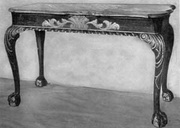
This article notes the various styles of and uses for sideboard tables in the 18th century. It originally appeared in the October 1938 issue of American Collector magazine, a publication which ran from 1933-1948 and served antique collectors and dealers.
Although the variety of sideboards made by American craftsmen working in the Hepplewhite, Sheraton, and American Empire styles are well known to everyone, relatively little attention has been paid to the forerunner of this highly useful and … (continue reading)
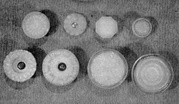
This article describes the evolution of the style and patterns of cut glass knobs, which came into use for drawer knobs in the 18th century, and notes some specific designs by Sandwich. It originally appeared in the May 1939 issue of American Collector magazine, a publication which ran from 1933-1948 and served antique collectors and dealers.
Just as brass handles, keyhole escutcheons and turned buttons replaced wooden knobs and wrought-iron handles on English and American furniture toward … (continue reading)

This article details the process of glass enameling and describes a particular punch bowl set (pictured). It originally appeared in the September 1939 issue of American Collector magazine, a publication which ran from 1933-1948 and served antique collectors and dealers.
Overlay or cased glass was a product of the 19th Century. But, although different in technique, it stemmed back, artistically at least, to the colorful enameled glass of the Romans which they first fashioned some two thousand years … (continue reading)
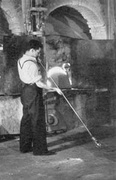
This photo essay shows the steps glass blowers took to create intricate hand-blown glass items (‘from bubble to goblet’). It originally appeared in the February 1938 issue of American Collector magazine, a publication which ran from 1933-1948 and served antique collectors and dealers.
Although the gaffer and his servitor seen in these pictures wear the clothes of today, they are actually following the same steps and using the same tools that glass blowers have used for … (continue reading)
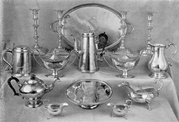
This article on Georgian silver, which was produced in the 18th and early-19th centuries, discusses the various design periods (such as Early Georgian, Rococo, and Adam), the various uses for silver items (from royal and religious purposes to use with tea, coffee, and chocolate in later years), and the historical context of the time period in which it was made. It originally appeared in the November 1937 issue of American Collector magazine, a publication which ran from … (continue reading)
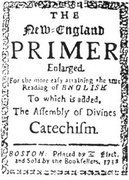
This article, written on the 500th anniversary of the invention of printing, discusses the historical significance of printing and the press, as well as its spread across the U.S., individuals important in its development, and its role during the American Revolution. This article originally appeared in the February 1940 issue of American Collector magazine, a publication which ran from 1933-1948 and served antique collectors and dealers.
Though slow in its beginning, John Gutenberg started the mighty force … (continue reading)
March 13, 2009

This article focuses on skilled glassblowers who created flasks in small and local glass houses in the Mid-West in the 1800s and discusses some of the rarest and most desirable flasks at the time of publishing. It originally appeared in the October 1937 issue of American Collector magazine, a publication which ran from 1933-1948 and served antique collectors and dealers.
Stiegel – Wistar – Amelung – are all names associated with romance and glamour in the early development of … (continue reading)
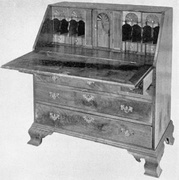
This article on the cabinetmakers of Chester County, Pa., during the 18th and 19th centuries discusses the evolution of the trade, notable cabinet makers, and popular furniture requests of the era. It originally appeared in the April 1939 issue of American Collector magazine, a publication which ran from 1933-1948 and served antique collectors and dealers.
The scope covered by the work of Chester County, Pa., cabinetmakers was literally from the cradle to the coffin. The daybooks are filled with … (continue reading)
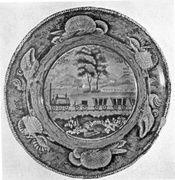
This article discusses the beginning of the railroad in the United States, especially the development of the Baltimore and Ohio, and notes the common misconception that the Staffordshire plates with railroad designs were of the Baltimore and Ohio railroad. It originally appeared in the December 1939 issue of American Collector magazine, a publication which ran from 1933-1948 and served antique collectors and dealers.
The Staffordshire potters, always eager for new designs, were quick to incorporate the locomotive, as … (continue reading)
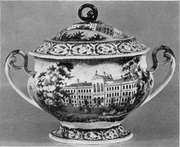
This article focuses on the history, design, and functions of soup tureens. With usages ranging from a soup container at dinner parties to a practical vase, soup tureens were popular in the 18th and 19th centuries. It originally appeared in the May 1940 issue of American Collector magazine, a publication which ran from 1933-1948 and served antique collectors and dealers.
Once again the tureen, after a long period of rest on the top shelf of the china closet, is making its appearance – … (continue reading)
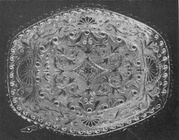
The following piece describes the most desirable pieces of Lacy Sandwich glass at the time it was published, such as oblong dishes, sugar bowls, and trays, and focuses on the design, patterns, and rarity of each. It originally appeared in the October 1939 issue of American Collector magazine, a publication which ran from 1933-1948 and served antique collectors and dealers.
In every branch of Sandwich collectibles, there are exceptional pieces which are interesting to collectors, either from a standpoint of … (continue reading)
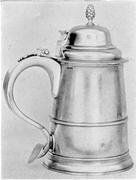
This is an article about the Huguenot silversmiths – French refugees who traveled to America in the 17th and 18th centuries – and their ability to create works in the popular styles of the times. It originally appeared in the July 1939 issue of American Collector magazine, a publication which ran from 1933-1948 and served antique collectors and dealers.
To those countries that afford asylum to the victims, national persecutions frequently reward the befrienders to a far … (continue reading)
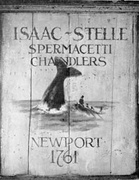
This article discusses the many types of advertising signs used in the 18th and 19th centuries to attract mariners, especially tavern signs, as taverns provided an important place for mariners to plan voyages and relax upon returning home. It originally appeared in the July 1939 issue of American Collector magazine, a publication which ran from 1933-1948 and served antique collectors and dealers.
Signs have always furnished a vivid means of advertising wares and attracting the attention of … (continue reading)















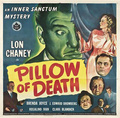 Hunting Down the Most Collectible Movie Posters, from 1930s Horror to 1960s Sci-Fi
Hunting Down the Most Collectible Movie Posters, from 1930s Horror to 1960s Sci-Fi How the American Flag Became Sacred—and the Hottest Brand in the Nation
How the American Flag Became Sacred—and the Hottest Brand in the Nation Elyse Karlin on the Beautifully Unrefined Origins of Arts & Crafts Jewelry
Elyse Karlin on the Beautifully Unrefined Origins of Arts & Crafts Jewelry This 1959 Goggomobil Is Insanely Cute and Gets 55 MPG. Why Can’t Detroit Do That?
This 1959 Goggomobil Is Insanely Cute and Gets 55 MPG. Why Can’t Detroit Do That? How America's Obsession With Hula Girls Almost Wrecked Hawai'i
How America's Obsession With Hula Girls Almost Wrecked Hawai'i Mari Tepper: Laying it on the Line
Mari Tepper: Laying it on the Line Nice Ice: Valerie Hammond on the Genteel Charm of Vintage Canadian Costume Jewelry
Nice Ice: Valerie Hammond on the Genteel Charm of Vintage Canadian Costume Jewelry How Jim Heimann Got Crazy for California Architecture
How Jim Heimann Got Crazy for California Architecture Modernist Man: Jock Peters May Be the Most Influential Architect You've Never Heard Of
Modernist Man: Jock Peters May Be the Most Influential Architect You've Never Heard Of Meet Cute: Were Kokeshi Dolls the Models for Hello Kitty, Pokemon, and Be@rbrick?
Meet Cute: Were Kokeshi Dolls the Models for Hello Kitty, Pokemon, and Be@rbrick? When the King of Comedy Posters Set His Surreal Sights on the World of Rock 'n' Roll
When the King of Comedy Posters Set His Surreal Sights on the World of Rock 'n' Roll How One Artist Makes New Art From Old Coloring Books and Found Photos
How One Artist Makes New Art From Old Coloring Books and Found Photos Say Cheese! How Bad Photography Has Changed Our Definition of Good Pictures
Say Cheese! How Bad Photography Has Changed Our Definition of Good Pictures Middle Earthenware: One Family's Quest to Reclaim Its Place in British Pottery History
Middle Earthenware: One Family's Quest to Reclaim Its Place in British Pottery History Fancy Fowl: How an Evil Sea Captain and a Beloved Queen Made the World Crave KFC
Fancy Fowl: How an Evil Sea Captain and a Beloved Queen Made the World Crave KFC